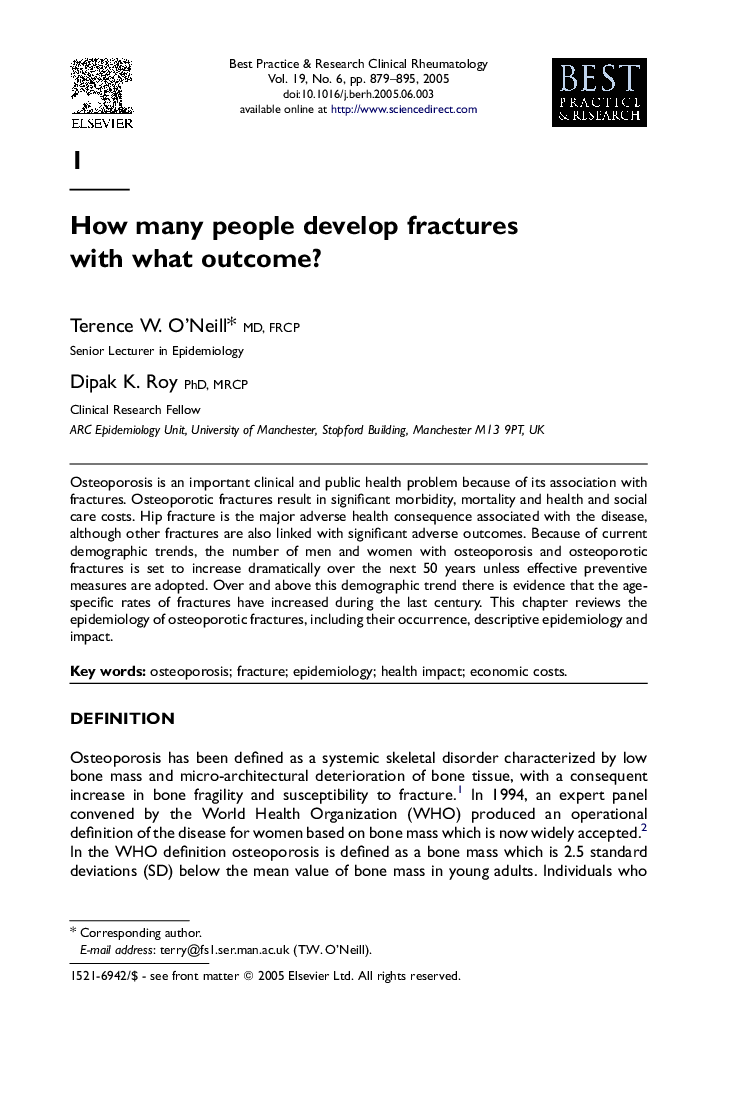| Article ID | Journal | Published Year | Pages | File Type |
|---|---|---|---|---|
| 9261959 | Best Practice & Research Clinical Rheumatology | 2005 | 17 Pages |
Abstract
Osteoporosis is an important clinical and public health problem because of its association with fractures. Osteoporotic fractures result in significant morbidity, mortality and health and social care costs. Hip fracture is the major adverse health consequence associated with the disease, although other fractures are also linked with significant adverse outcomes. Because of current demographic trends, the number of men and women with osteoporosis and osteoporotic fractures is set to increase dramatically over the next 50 years unless effective preventive measures are adopted. Over and above this demographic trend there is evidence that the age-specific rates of fractures have increased during the last century. This chapter reviews the epidemiology of osteoporotic fractures, including their occurrence, descriptive epidemiology and impact.
Related Topics
Health Sciences
Medicine and Dentistry
Immunology, Allergology and Rheumatology
Authors
Terence W. (Senior Lecturer in Epidemiology), Dipak K. (Clinical Research Fellow),
